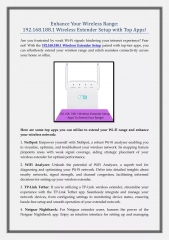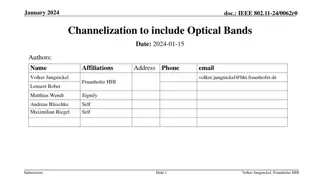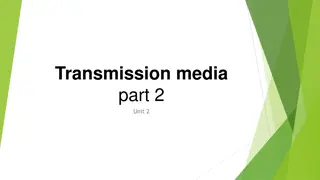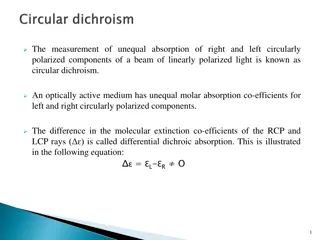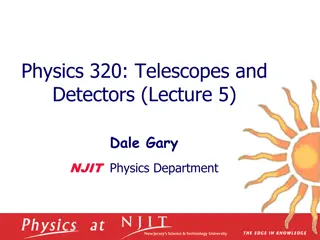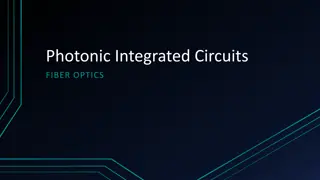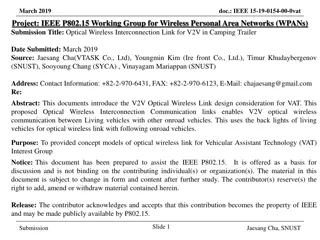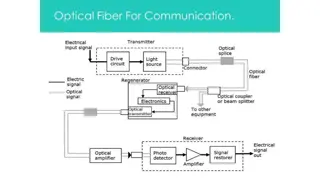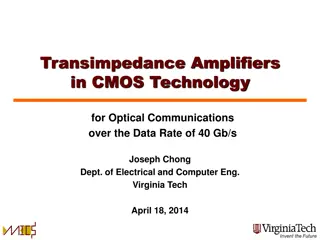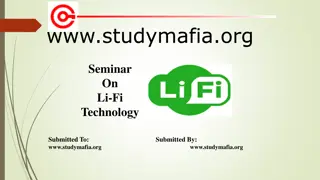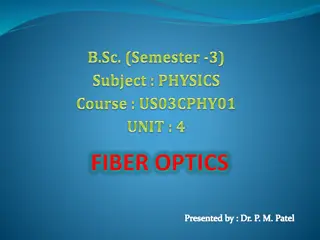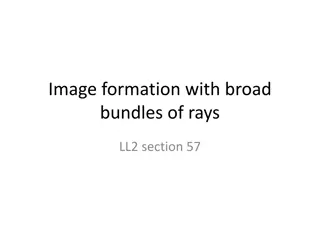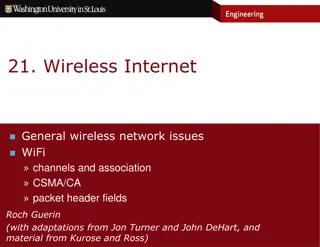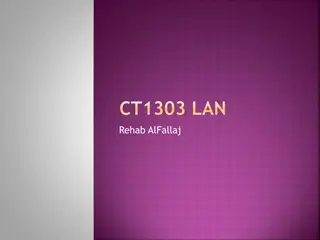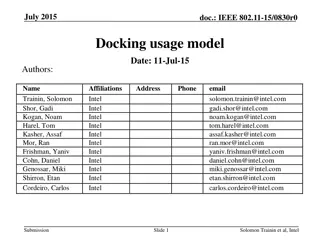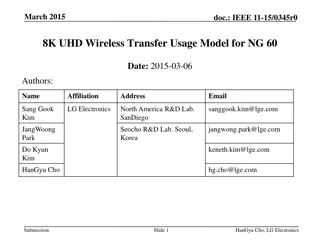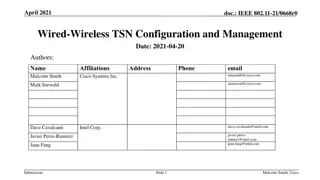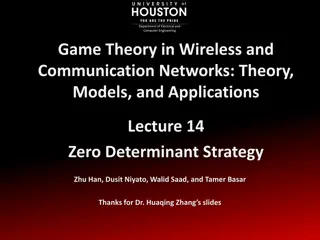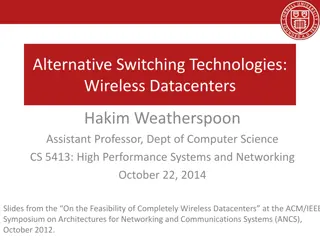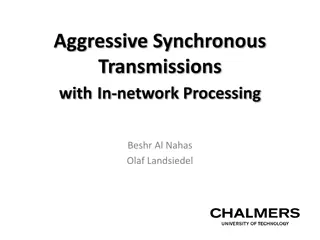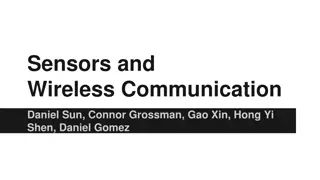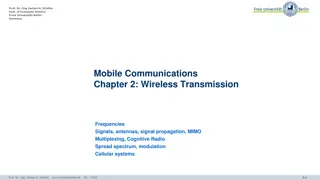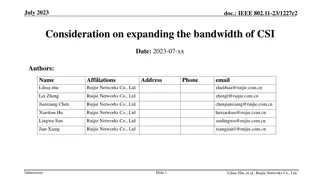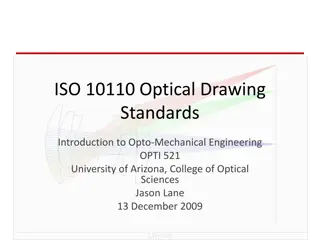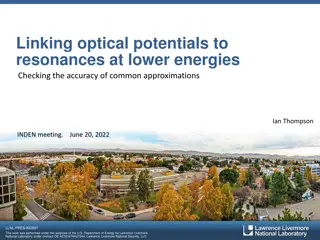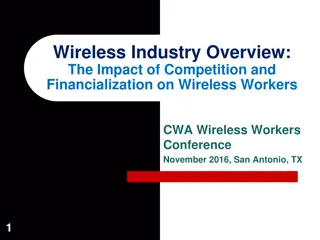Enhance Your Wireless Range: 192.168.188.1 Wireless Extender Setup with Top Apps
Are you tired of weak Wi-Fi signals limiting your internet access? Fear not! With the 192.168.188.1 Wireless Extender Setup and some top-notch apps, you can extend your wireless range and enjoy seamless connectivity throughout your home or office.\n\nfor more info: https:\/\/1921681881.com\/192-168-
6 views • 2 slides
Scrolls:Rolling Flexible Surfaces for Wideband Wireless
Revolutionizing wireless communication, the Scrolls project introduces rolling flexible surfaces for wideband wireless applications. With the expectation of 30 billion wireless devices by 2025, the project emphasizes standards and frequencies such as Cellular, Wi-Fi, and IoT. By offering a standard-
2 views • 19 slides
Understanding Wireless Communication Networks by Dr. K. Gopi at SITAMS
Wireless Communication Networks (WCN) is a fundamental aspect of modern telecommunication, allowing information transfer without physical connections. Dr. K. Gopi, an Associate Professor at the Department of ECE at SITAMS, introduces concepts like multiple access techniques, traffic routing, and the
1 views • 13 slides
Channelization to Include Optical Bands in IEEE 802.11 Standards
This document discusses the proposal to incorporate optical bands into the channelization framework of the IEEE 802.11 standard. It aims to align the channelization approach for integrated LC with that of mm-wave technology in the IMMW scope. The contribution highlights recent works, emphasizing the
2 views • 11 slides
Understanding Different Types of Wireless Transmission Media
Wireless transmission encompasses various forms of unguided media, including radio, microwave, and infrared waves. Each type serves unique communication purposes based on their frequency ranges, wavelengths, and propagation characteristics. Wireless signals, whether through radio waves with extensiv
0 views • 6 slides
Rate Optimization in Wideband RIS-assisted Wireless Systems
This research focuses on rate optimization in wideband RIS-assisted wireless systems, specifically investigating MIMO RIS-assisted systems in sub-6 GHz mmWave settings. Pathloss and blockage modeling, along with LOS vs. spectral efficiency and RIS-UE distance vs. spectral efficiency analyses, are ke
0 views • 4 slides
Optical Properties of Optically Active Compounds
Circular dichroism and optical rotatory dispersion are important techniques for studying the optical properties of optically active compounds. Circular dichroism measures the differential absorption of left and right circularly polarized light components, while optical rotatory dispersion studies th
0 views • 17 slides
Understanding Optical Telescope Types and Lens-Maker's Formula
Optical telescopes utilize lenses or mirrors to collect and focus light for imaging celestial objects. The lens-maker's formula is crucial for determining the focal length of lenses, considering factors like index of refraction and radii of curvature. Different lens configurations and materials help
0 views • 17 slides
Overview of Optical Fibre Technology and Applications
Optical fibre technology, spearheaded by Dr. Prabodh Sahai Saxena, revolutionizes communication systems through light transmission. This cutting-edge technology utilizes fibre optics made of glass or plastic to carry light signals, offering advantages like high bandwidth, low signal loss, and no ele
0 views • 20 slides
Evolution of Optical Technology: From Telegraph to Photonic Integrated Circuits
The journey of optical technology evolution spans from the invention of the telegraph in 1836, through the introduction of optical fibers in 1978, to the development of photonic integrated circuits in the present era. Key milestones include the advent of optical amplifiers in 1990, the emergence of
0 views • 70 slides
Optical Wireless Interconnection Link for V2V in Camping Trailer
Introducing a design concept for Optical Wireless Communication Link for Vehicular Assistant Technology (VAT), enabling V2V communication between living vehicles and other on-road vehicles. Utilizing back lights of living vehicles, this system aims to improve visibility and safety on the road, espec
0 views • 5 slides
Fiber Optic Communication System Overview
This article presents a detailed explanation of a point-to-point fiber optic communication system, outlining the process from voice conversion to signal transmission and reception. It discusses the advantages and limitations of optical communication systems, along with numerical examples related to
5 views • 11 slides
Optical Equipment Safety Review and Hazard Analysis
This document provides an in-depth review of the safety considerations for the ATST optical equipment, focusing on potential hazards associated with the M2 Mirror, Heat Stop Assembly, and other critical components. The Preliminary Hazard Analysis identifies various risks, causes, and recommended act
0 views • 13 slides
Overview of Laser Delivery Systems for Surgical Procedures
Institute of Laser for Postgraduate Studies at the University of Baghdad, led by Assist. Prof. Dr. Lutfi Ghulam Awazli, focuses on laser delivery systems in surgical procedures. The systems discussed include optical fibers, articulated arms, hollow waveguides, and free beams. Optical fibers, compose
0 views • 10 slides
Understanding Optical Storage Technology
Optical storage technology originally designed for audio offers a capacity of 650MB, providing over 70 minutes of audio playback. Data is recorded digitally on a polycarbonate disk's surface as microscopic pits. The disk is organized in a spiral track with sectors of the same length arranged in bloc
5 views • 16 slides
Tamper-Evident Pairing (TEP) Protocol for Secure Wireless Pairing Without Passwords
This article discusses the challenges of traditional secure wireless pairing methods that rely on password validation and proposes the Tamper-Evident Pairing (TEP) protocol as a secure in-band solution to protect against Man-in-the-Middle (MITM) attacks. TEP eliminates the need for out-of-band chann
1 views • 40 slides
Optical Alignment Using Beam Triangle Opti 521 Phil Scott
This presentation delves into the intricate process of optical alignment using a beam triangle, focusing on defining optical and mechanical axes, addressing alignment challenges, degrees of freedom for various elements, and the importance of setting up a beam triangle for accurate alignment. The con
0 views • 14 slides
Transimpedance Amplifiers in CMOS Technology for Optical Communications at 40 Gb/s
This research by Joseph Chong at Virginia Tech delves into the use of transimpedance amplifiers (TIAs) in CMOS technology for optical communications operating at a data rate of 40 Gb/s. The study outlines the motivation behind the project, the role of TIAs in optical receivers, TIA circuit topologie
0 views • 52 slides
Optical Frequency Interferometer Bench Analysis
Detailed examination of the optical setup for an Optical Frequency Interferometer (OFI) system, including the input/output configurations with various optical components such as prisms, crystals, and wave plates. The analysis focuses on the path and behavior of beams within the system, considering r
0 views • 14 slides
Understanding Li-Fi Technology: A Comprehensive Overview
Li-Fi is a cutting-edge wireless optical networking technology that utilizes LED light bulbs for data transmission. Developed by Professor Harald Haas, Li-Fi offers high-speed connectivity by modulating light imperceptibly for optical data transmission. This technology has the potential to revolutio
2 views • 14 slides
Evolution of Optical Fiber Technology
Optical fiber technology has a rich history starting from John Tyndall's demonstrations in 1870 to the development of flexible fiberscopes by Hopkins and Kapany. This technology revolutionized communication systems and medical diagnostics, enabling the transmission of information through thin glass
0 views • 85 slides
Exploring Wireless Technologies and Mobile Commerce
Delve into the realm of wireless technologies, mobile computing, and mobile commerce with a focus on the advantages and disadvantages of wireless transmission media, business applications of short-range to long-range networks, m-commerce benefits for businesses, technologies in pervasive computing,
0 views • 36 slides
Optical Image Formation: Principles and Conditions
Understanding the principles and conditions governing optical image formation, including the role of broad bundles of rays, wave surfaces, magnification ratios, and axially-symmetric optical systems. Explore the conditions for imaging line segments, optical path lengths, and the general criteria for
0 views • 13 slides
Wireless Network Essentials and Classification
Wireless networks play a vital role in our modern world, with mobile devices outnumbering wired connections. This overview covers wireless network fundamentals, including elements, characteristics of wireless links, ad hoc operations, and network classifications like mesh networks and MANET.
0 views • 45 slides
Understanding Wireless Networks: Types and Applications
Wireless networks utilize wireless data connections to connect network nodes and share resources. They include Wireless Personal Area Networks (WPAN), Wireless LAN, Wireless WAN, Wireless Broadband, and Wireless Cellular. Each type has specific characteristics and applications, such as linking perso
0 views • 29 slides
Wireless Office Docking Model for Multiple Devices
This document outlines a usage model for office docking involving wireless connections between mobile devices and various peripheral devices such as monitors, hard drives, printers, and more. It describes scenarios for single and multiple devices in both home and office settings, emphasizing the nee
0 views • 5 slides
Evolution of 8K UHD Wireless Transfer Usage Model for Next Generation Displays
This IEEE document discusses the evolution of high-resolution displays and services, reviews wired interface solutions, and proposes a wireless transfer usage model for 8K UHD displays. It covers the advancements in display technology, including commercial 4K and 8K UHD offerings, broadcast services
0 views • 11 slides
Overview of External Wireless Communication System on International Space Station (ISS)
This presentation covers the overview and experience of implementing an external 802.11n wireless communication system on the International Space Station (ISS). It discusses the existing wireless system, committed users, system architecture, and future challenges. The system provides high data rate
0 views • 18 slides
Challenges and Solutions in Wired-Wireless TSN Configuration
This document discusses the challenges faced in configuring and managing wired-wireless TSN domains, focusing on the unique aspects of wireless networks such as fading, variable delays, and shared medium access. It presents models for physical and logical integration of wired and wireless TSN, empha
0 views • 13 slides
Lab 3: Centering Optical Elements & Systems with Precision
Centering optical elements and systems accurately is crucial for optical alignment processes. This lab focuses on using an air bearing rotary table and dial indicators to achieve precise centering. The equipment used includes PSM, displacement indicators, adjustment screws, and magnetic mounts. Prop
0 views • 14 slides
Game Theory Applications in Wireless Communication Networks
Explore the application of game theory in wireless communication networks through lectures covering various game theory concepts such as non-cooperative games, Bayesian games, and cooperative games. The focus is on Zero-Determinant Strategy, a method used for resource sharing and power control in wi
0 views • 36 slides
Wireless Programming for Hardware Dummies: Simplifying Wireless Research in the Industry
Explore the world of wireless programming for hardware beginners with a comprehensive guide on software-defined radios, FPGA usage, and modern wireless research challenges. Discover the importance of innovative PHY/MAC designs, new protocols like 5G and IoT, and the need for high-rate DSP in wireles
0 views • 76 slides
Exploring Wireless Technologies for Datacenters
This presentation delves into the feasibility and advantages of completely wireless datacenters, focusing on alternative switching technologies, goals, conventional setups, opportunities, 60GHz wireless technology, antenna models, design challenges, and the motivation behind moving towards wireless
0 views • 28 slides
Advanced Strategies for Wireless Communication Networks
Explore advanced strategies for wireless communication networks, including aggressive synchronous transmissions with in-network processing, goals beyond capture-based processing, concurrent wireless transmissions, and innovative concepts for efficient data transfer and network reliability. Dive deep
0 views • 11 slides
Understanding Sensors and Wireless Communication in Technology
Exploring the world of sensors and wireless communication through LED technology, electro-optical sensors, chemiresistors, and more. Learn how LEDs work, the principles behind electro-optical sensors, and the implementation of these technologies in various applications. Discover the intricate mechan
0 views • 28 slides
Understanding Wireless Communication Frequencies and Regulations
Explore the world of wireless communication frequencies, signals, and regulations explained by Prof. Dr.-Ing. Jochen H. Schiller from Freie Universität Berlin, Germany. Discover the various frequency ranges from VLF to EHF, examples for mobile communication frequencies, and regulations in Europe, U
0 views • 44 slides
Enhancing Bandwidth of Channel State Information (CSI) for Wireless Sensing Applications
This submission delves into the necessity of expanding the bandwidth of Channel State Information (CSI) in wireless environments to cater to the demands of time-sensitive wireless sensing applications. It explores the implications of high-bandwidth CSI on enhancing wireless channel understanding, ac
0 views • 12 slides
Understanding ISO 10110 Optical Drawing Standards
ISO 10110 Optical Drawing Standards provide guidelines for preparing drawings of optical elements and systems, essential for interpreting optical drawings accurately. The standard includes 13 parts covering aspects such as material imperfections, surface form tolerances, and more. Compliance with IS
0 views • 17 slides
Exploring Optical Potentials and Resonances at Lower Energies
Investigating the accuracy of common approximations in linking optical potentials to resonances at lower energies. The study focuses on neutron reactions with 14N as a test case, transitioning from R-matrix theory to Hauser-Feshbach models and evaluating known levels and level densities. Key topics
0 views • 22 slides
Overview of Wireless Industry: Competition and Financialization Impact on Workers
The wireless communications industry is rapidly evolving, with increasing data traffic, market penetration, and a shift towards wireless-only households. Major companies like AT&T, Verizon, Google, and Netflix are shaping the industry with a focus on network infrastructure and services. Despite the
0 views • 18 slides
